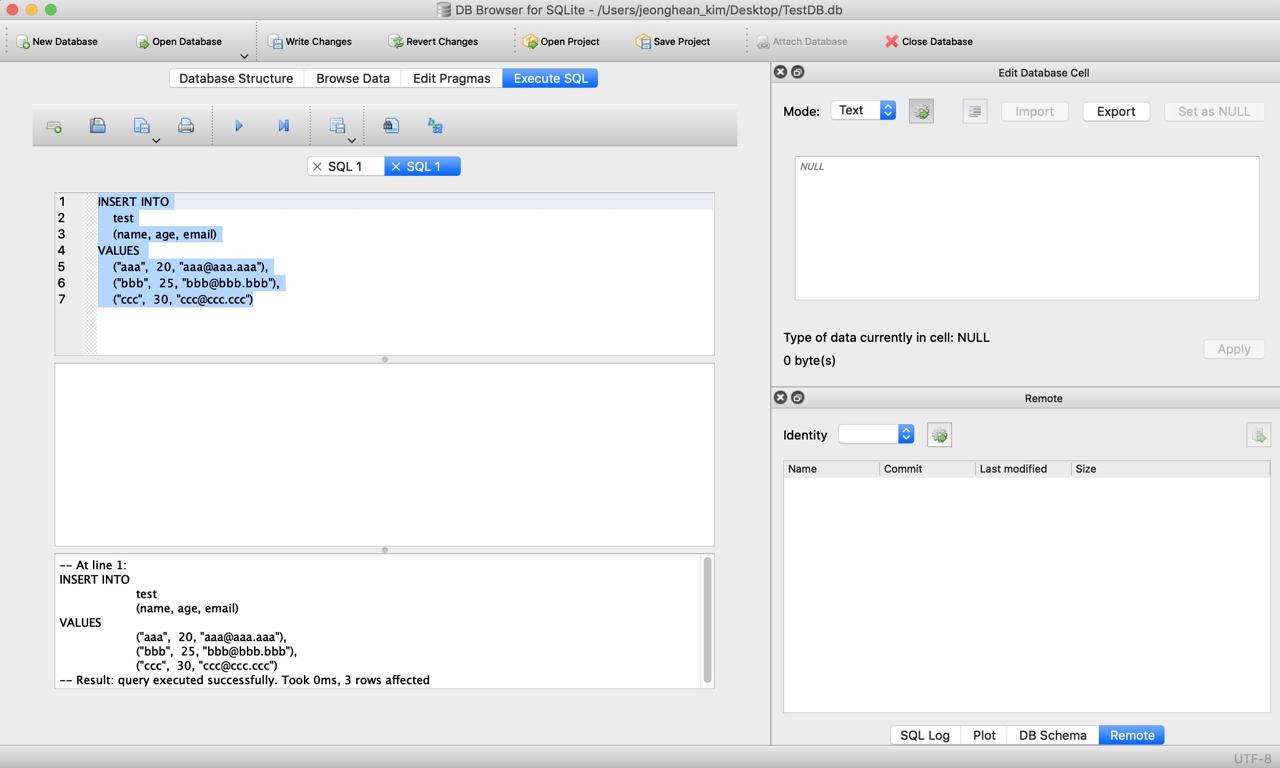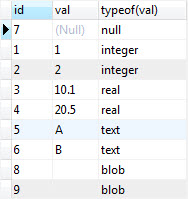

If a literal has no enclosing quotes and decimal point or exponent, SQLite assigns the INTEGER storage class.SQLite determines the data type of a value based on its data type according to the following rules: The maximum size of BLOB is, theoretically, unlimited. SQLite supports various character encodings.īLOB stands for a binary large object that can store any kind of data. Real values are real numbers with decimal values that use 8-byte floats. An integer can have variable sizes such as 1, 2,3, 4, or 8 bytes. Integer values are whole numbers (either positive or negative). NULL values mean missing information or unknown. The following table illustrates 5 storage classes in SQLite: Storage Class In most cases, you can use storage classes and data types interchangeably. A storage class is more general than a data type e.g., INTEGER storage class includes 6 different types of integers. Storage classes describe the formats that SQLite uses to store data on disk. SQLite provides five primitive data types which are referred to as storage classes. In case you declare a column with the integer data type, you can store any kind of data types such as text and BLOB, SQLite will not complain about this. In addition, you don’t have to declare a specific data type for a column when you create a table. In other words, a value stored in a column determines its data type, not the column’s data type. It means when you declare a column with a specific data type, that column can store only data of the declared data type.ĭifferent from other database systems, SQLite uses dynamic type system. If you come from other database systems such as MySQL and PostgreSQL, you notice that they use static typing. SQLite Manager was used for testing the above.Summary: in this tutorial, you will learn about SQLite data types system and its related concepts such as storage classes, manifest typing, and type affinity. If you wanted to ignore rather than abort (the default) then you could use :- INSERT OR IGNORE INTO testinsert VALUES('100','abc') - insert Skipped - no fail INSERT INTO testinsert VALUES('100','100','100') - Ouch typeof will consider '100' as a string, not an integer INSERT INTO testinsert VALUES('100','100',100) - OK (CAST can accept integers as strings) With the CO元 added to the table :- INSERT INTO testinsert VALUES(100,100,100) - OK (all integers) INSERT INTO testinsert VALUES('abc',100) - ouch for COL1 (abc) INSERT INTO testinsert VALUES('0',100) - OK INSERT INTO testinsert VALUES(0,100) - OK INSERT INTO testinsert VALUES('100','abc') - ouch for COL2 (abc) INSERT INTO testinsert VALUES('100',100) - OK The following are some example INSERTS with the result :- INSERT INTO testinsert VALUES(100,100) - OK The previous examples, using CAST, will allow integers provided as strings, whilst using the typeof function will only allow integers. Noting that there is a subtle difference between using CAST and TYPEOF.CO元 INTEGER CHECK(typeof(CO元) = 'INTEGER') You could also use the TYPEOF function e.g.

However, to cater for 0 as a valid value 1 is concatenated to the column's value. The result will be 0 (false) if the value is not an INTEGER. The constraint works by checking the value of the column when CAST to an INTEGER.

I believe you could use a CHECK constraint e.g.


 0 kommentar(er)
0 kommentar(er)
